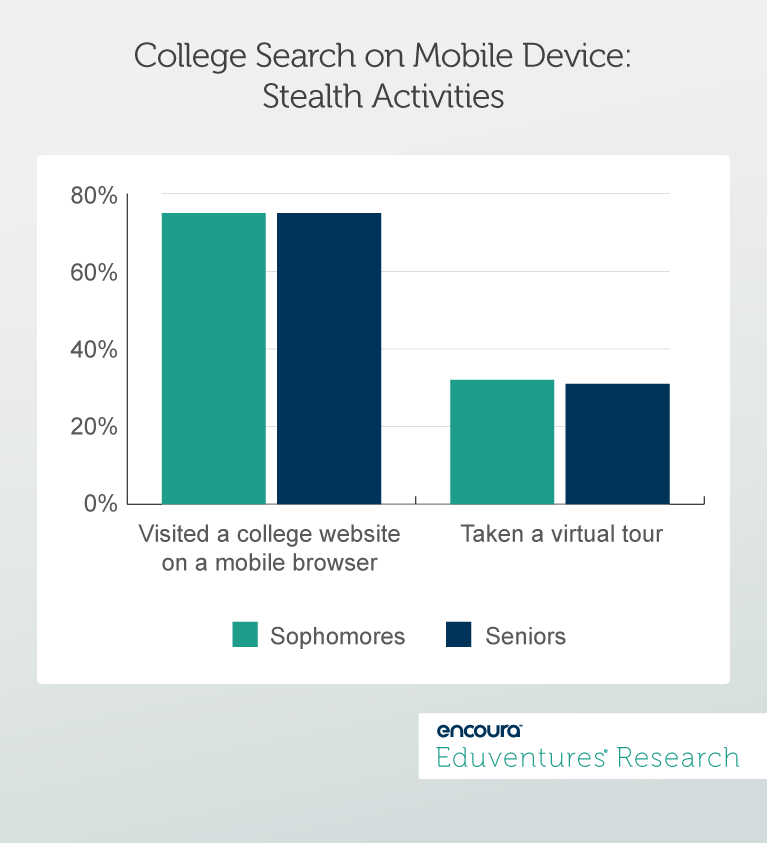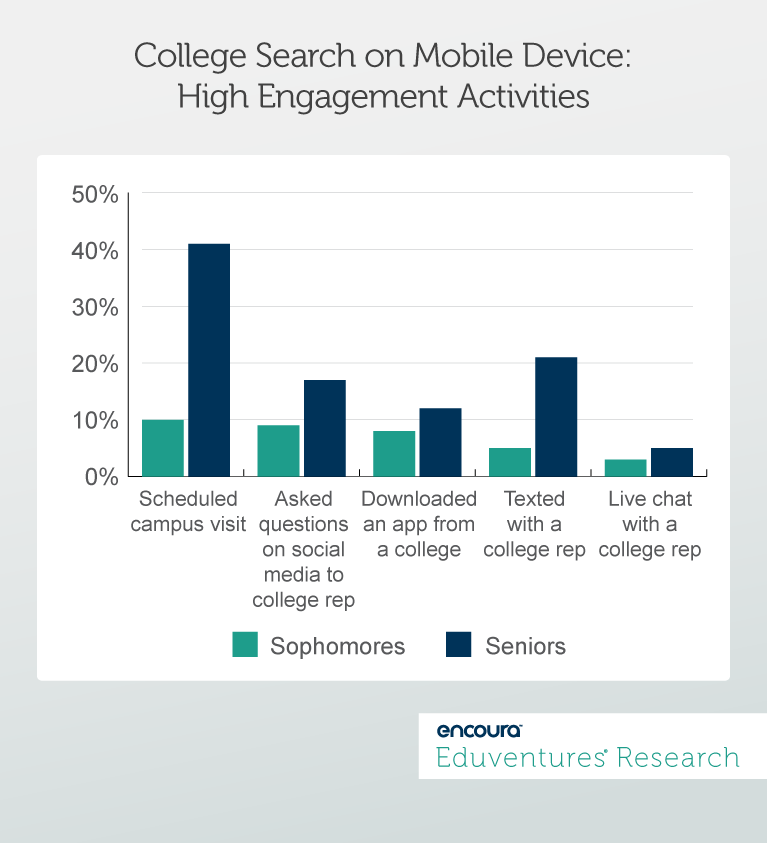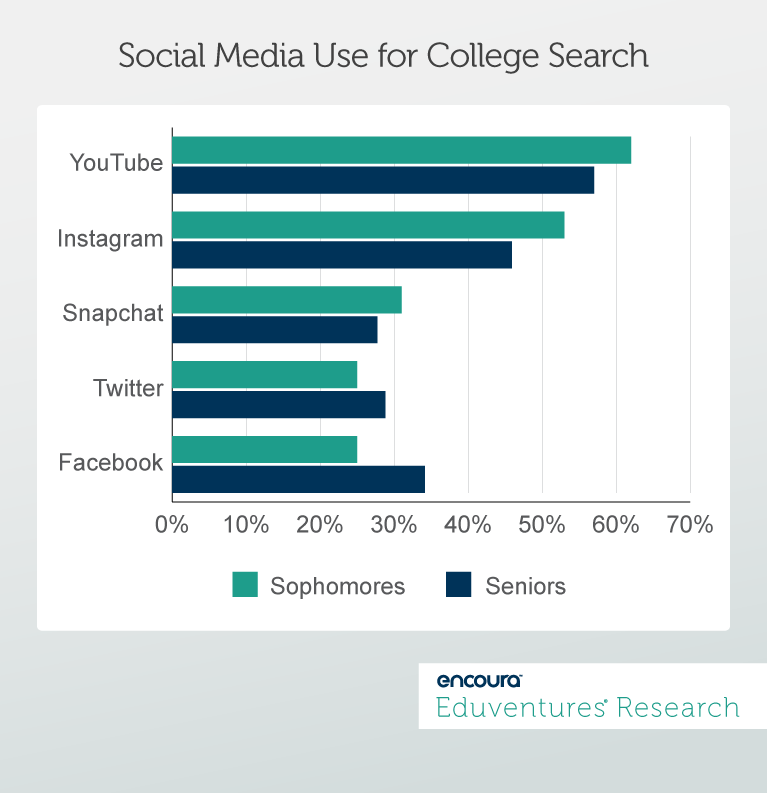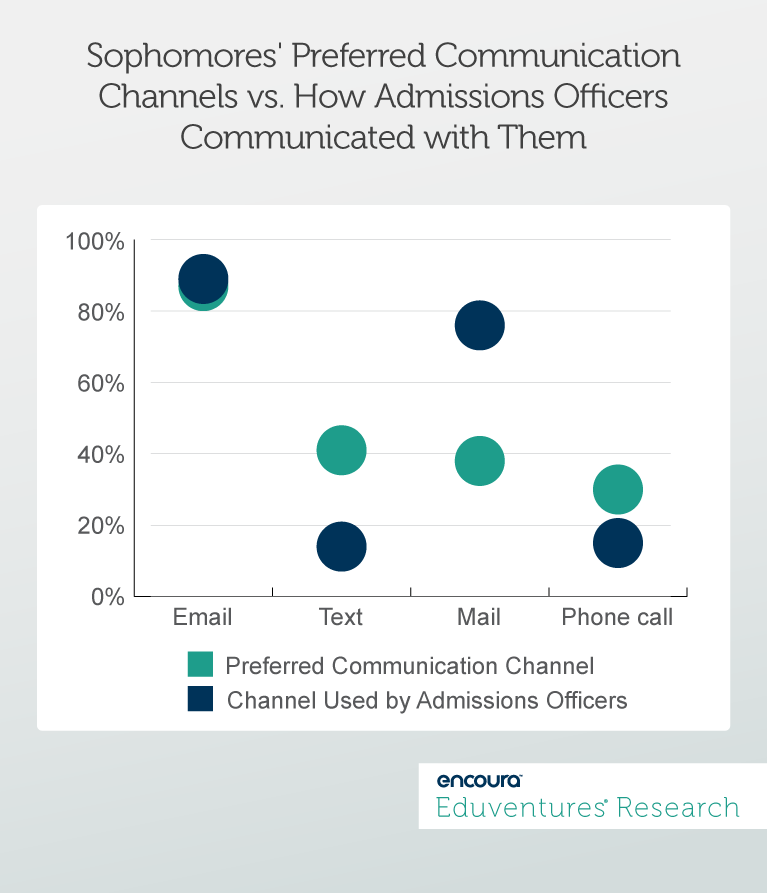At most schools, summer melt has come and gone and the admissions office is already working hard to bring in the class for fall 2019. Chances are, it may even be thinking ahead to 2021. But what about 2022? Is marketing to sophomores worth the effort?
According to fresh survey data on the college-bound high school student market, the answer is “yes.” But what does that mean?
Eduventures’ new Student Sentiment Survey, based on a national sample of 4,700 high school students, examines the college search behaviors and communication preferences of Generation Z (Gen Z). Focusing on sophomores may not pay off immediately, but four key findings indicate that they are already paying attention to you.
College-bound sophomores are surprisingly active.
While the high school sophomores in our survey, drawn from students who participate in myCollegeOptions™, were still more than a year away from preparing their applications and entering the final stages of the college race, they were eagerly warming up. When compared with high school seniors, equal numbers of sophomores (75%) reported visiting a college website via their preferred method of communication, their mobile devices. More than half (58%) told us they visit college websites on their mobile devices at least once a month, and 39% did so at least weekly. Sophomores are also at least as likely as seniors to have taken a virtual campus tour on their phones, (32% vs. 31%, respectively, see Figure 1). 
Sophomores are exploring, but are not yet interested in high engagement.
Sophomores may be exploring their college options—even reaching out to schools of interest—but they are not quite sure that schools are paying attention to them yet. Nor are they too concerned about it. While the majority (70%) reported that they had requested information from a school’s website, about half expect to hear back within a week. Forty-seven percent of juniors and 66% seniors, however, want to hear back within 24 hours. As you might expect of this cohort, far fewer engage in activities like campus visits, texting, or live chatting. In contrast, high school seniors, who at the time of the survey were making their enrollment decision, were more actively engaging with schools (Figure 2).
Sophomores use social media differently.
If your institution’s social media strategy is primarily built on Facebook and Twitter, it may be time to reconsider. The Student Sentiment Survey indicates a declining relevance of these two channels among Gen Z. While 68% of senior respondents still use Facebook, the popularity of this platform is far lower among sophomores. Only half (50%) of sophomores reported they use Facebook at least once in a while. The proportion of students who use Twitter is even lower, with 56% of seniors and 46% of sophomores using this platform. A smaller percentage of students who use Facebook and Twitter also use them for college search compared to students who use YouTube and Instagram. Figure 3 shows the proportion of respondents who indicated they used, or plan to use, these platforms to research colleges.
Sophomores view mail and texts on equal footing.
Yet, admissions uses mail and rarely uses text. Like juniors and seniors, sophomores prefer to communicate with admissions officers mostly via email; they said this is also how colleges most often communicate with them. While 76% of sophomores recall receiving printed recruitment materials in the mail, only 38% appreciate the time, effort, and money schools put into sending out postcards, letters, and view books. A better way to reach them may be through text message: 40% of sophomores prefer to communicate this way, but also say that schools rarely do so. Juniors and seniors are nearly three times as likely as sophomores to receive a text message from an admissions officer (see Figure 4).
